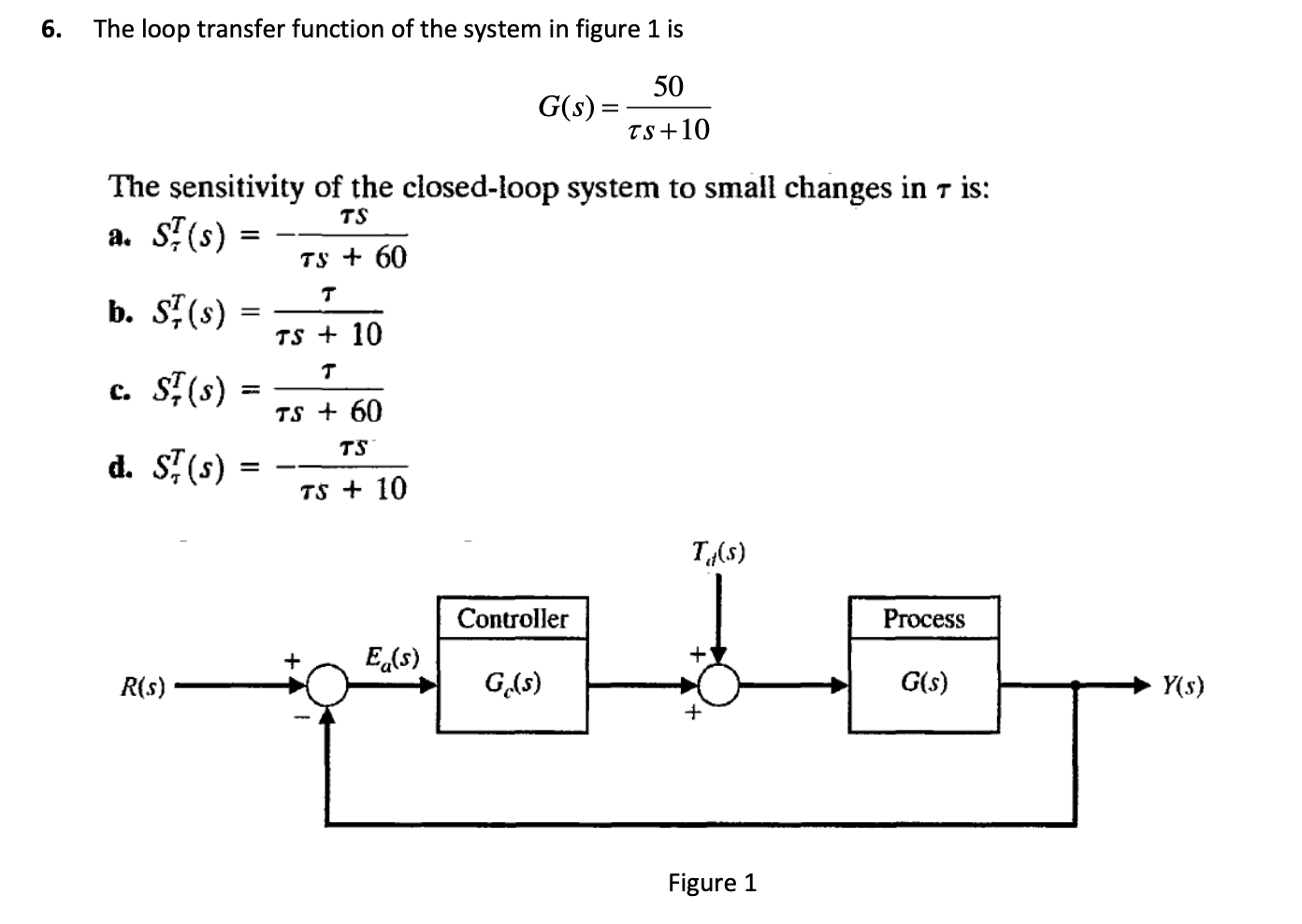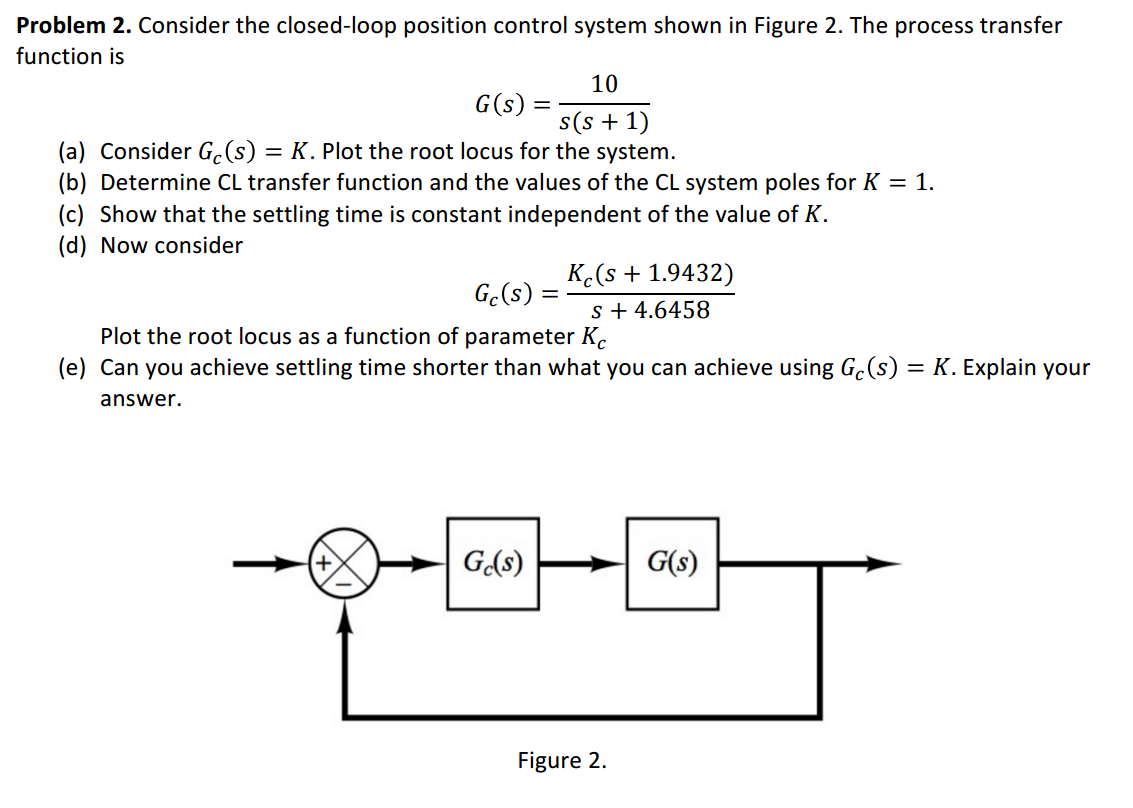
#Closed loop transfer function how to#
If we assume the motor to be a linear system, zeros and poles of the transfer function would give to us information on how to design a working circuit to control the motor speed.įor more information about the math behind this see DC motor roots.It is a good thing that I am not on your Thesis committee, as I would not allow such "beginner" LabVIEW code to be presented as part of a Thesis that purports to instruct other students in the "theory of. When we add the sensor and the control circuit the resulting new system will be the closed loop. We need a speed sensor and a controller to control the speed to be wanted in different loading conditions. This new system (=the old system+sensor +controller) we call a closed loop system and if we construct it correctly it will be stable and its output will stay in the wanted state accurately enough.Ī good example of the open loop system of a DC motor. This means that we need a sensor that measures the output and a controller which decides the desired input of the system. It's very usual task to force a not well defined system to a desired state. Most open loop systems are not well defined One cannot be sure what input is needed for the wanted output. Mathworks tutorials are great for these purposes. You can try to follow some tutorials to understand better what the procedures are and what do you gain from using closed loop method. If you want to know what the behavior of your new transfer function is going to be you have to solve the equation:īy placing the poles and zeros of the closed loop transfer function properly you will be able to get away with a lot of uncertain and stochastic influences in the system, such as: What you usually do when you have a transfer function is that you evaluate roots of the denominator - the poles. The easiest way to understand this is if you look at the closed loop transfer function denominator. Usually, when you are designing the controller \$C(s)\$ you are setting the poles and zeros of the open loop transfer function, using Bode plot, Nyquist plot, root locus, compensation algorithms, loop shaping and similar. The complete transfer function of the closed loop is derived like this: The following image shows simple general closed loop block diagram. Closed-loop controlĬlosed-loop control is everywhere and it has well described and documented synthesis procedures and analysis frameworks. And therefore you need to "close the control loop". To be able to compensate the parts of the stochastic parts of the system you will need to introduce some kind of measurement. These disturbances can be a simple as measurement noise, but can be much more complicated and harmful. And more importantly you cannot compensate without measurement. In theory the perfect controller of the open loop procedure would be:īut what happens in theory is that systems have uncertain stochastic disturbances \$d(s)\$, which you cannot anticipate. With the poles and zeros of the controller \$C(s)\$ you can tune the behavior of your complete system, even stabilize it in theory. The complete open-loop transfer function( also known as forward transfer function) is no longer in between input \$u(s)\$ and output \$y(s)\$ but set point (reference) value of the output \$r(s)\$ and \$y(s)\$: Open-loop control procedure does not rely on measurements of the controlled variables and assumes that system behavior is well known and deterministic, therefore it can be controlled without any knowledge what happens with the output value \$y(s)\$.

There are two types of control you can apply to the physical system defined as the one above: In the general, the transfer function's behavior, poles and zeros, time constants and characteristic frequencies are different then you want them to be and there for therefore you need a controller.

Unstable - at least one pole is positive or equal to zero.DC motor (shaft velocity, armature current).

Transfer functions can be stable and unstable: From the transfer function you can ideally find out everything you need to know about the system from the point of view of the control engineer, but that often is not a case. If you have a dynamical system with input \$u(s)\$, output \$y(s)\$ defined as:ĭynamical systems described with transfer functions are idealized, generalized and abstracted, many different systems can be described with the same transfer function. I just wanted to make things a bit more clear here because it seems that the idea of open loop/closed loop/forward transfer function has got a bit mystified and does not seem exact even though it really is.


 0 kommentar(er)
0 kommentar(er)
